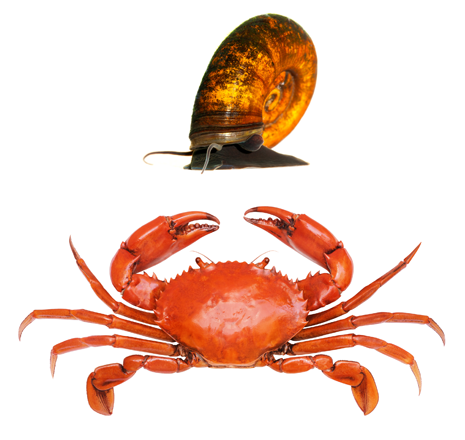Species can evolve adaptations to many different aspects of their environments, including the presence and activities of other species. While abiotic factors also act as agents of selection, they differ in a fundamental way from biotic agents in that they do not themselves undergo change as a result of the interaction. Coevolution occurs when an adaptation in one species leads to the evolution of a reciprocal adaptation in a species it interacts with.
Predator–prey relationships can provide the selection pressure for two species to coevolve. In this tutorial, investigate the coevolution of a species of crab (the predator) with a species of snail (the prey). If crabs hunt snails by crushing them with their claws, the snails might evolve thicker shells that work better in defense (the thicker-shelled snails survive better and reproduce). Then, as a result of their prey becoming harder to crush, the crab species might evolve stronger claws. When a predator–prey relationship escalates, serial adaptations can mimic an evolutionary arms race. (Photo Credits: Crab - © iStock/chiravan39; Snail - © iStock/Valengilda)

Click the Next button below to begin.

